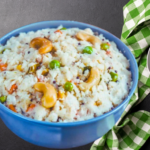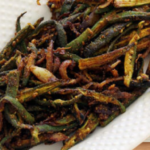Samosa Recipe
Samosa recipe | Aloo samosa – Samosa are undoubtedly one of the most iconic and beloved snacks in Indian cuisine. These crispy, golden pockets filled with spiced potatoes and peas are enjoyed by people all over the world. Whether you’re craving a savory snack for tea time or planning a festive gathering, samosas are always a hit. In this comprehensive guide, I’ll walk you through everything you need to know to make the perfect samosas at home. From the classic samosa recipe to expert tips and commonly asked questions, you’ll be an expert samosa-maker in no time!
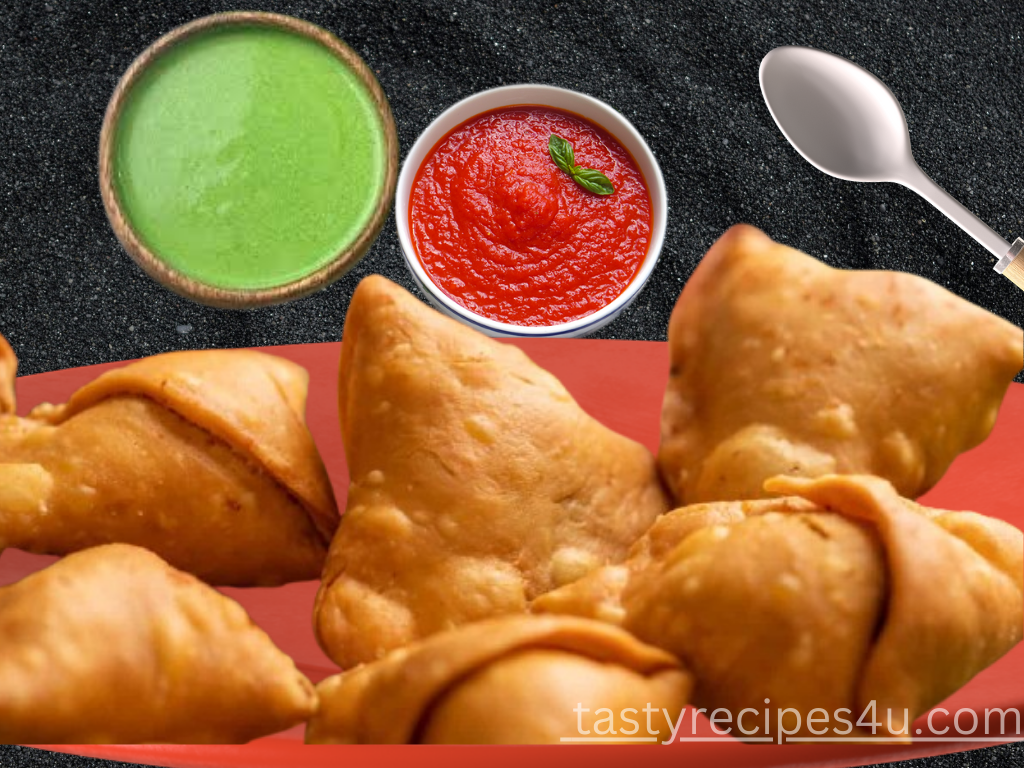
About Samosa
Samosas are savory pastries originating from South Asia, consisting of a crisp outer shell filled with a delicious mixture of spiced potatoes, peas, and sometimes meat or other vegetables. To make samosas, prepare a simple dough using flour, water, and oil. Shape the dough into cones, fill them with the prepared filling, and seal them tightly. Fry the samosas until golden brown and crispy, then serve them hot with chutney or sauce for dipping. These irresistible snacks are perfect for any occasion, whether as a quick bite or a party appetizer, delighting taste buds with their crunchy exterior and flavorful interior.
How to Make Samosa Recipe
Ingredients for Samosa Recipe
For the dough:
- 2 cups all-purpose flour
- 1/4 cup vegetable oil
- 1/2 teaspoon salt
- Water, as needed
For the filling:
- 2 large potatoes, boiled and mashed
- 1/2 cup green peas, boiled
- 1 tablespoon vegetable oil
- 1 teaspoon cumin seeds
- 1 teaspoon ginger-garlic paste
- 1 green chili, finely chopped (optional)
- 1 teaspoon garam masala
- 1 teaspoon coriander powder
- 1/2 teaspoon turmeric powder
- Salt, to taste
- Fresh cilantro leaves, chopped
- Oil, for deep frying
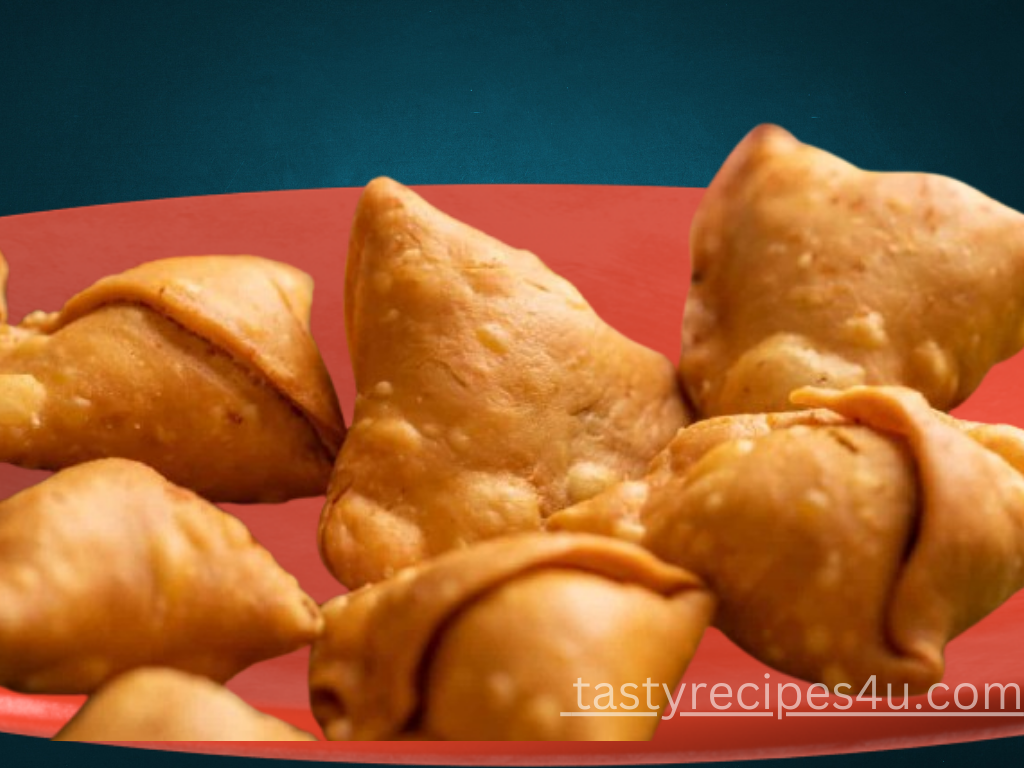
Instructions of Samosa Recipe
- Prepare the Dough:
- For this samosa recipe, Combine the vegetable oil, salt, and all-purpose flour in a large mixing bowl. To make the flour resemble breadcrumbs, rub in the oil.
- Water should be added gradually and dough should be worked until smooth. After covering the dough with a damp cloth, allow it to rest for half an hour.
- Prepare the Filling of this Samosa recipe
- Add the chopped green chilies and ginger-garlic paste, if using. Sauté until fragrant.Add mashed potatoes, boiled green peas, garam masala, coriander powder, turmeric powder, and salt. Cook for a few minutes after thoroughly mixing. Stir in chopped cilantro leaves and remove from heat. Allow the filling to cool completely.
- Assemble the Samosas:
- Divide the rested dough into equal-sized balls and roll each ball into a thin circle.
- Each circle should be cut in half to create semi-circles.
- Then, take one semi-circle and fold it into the shape of a cone, sealing the edges with water.
- Fill the cone with a spoonful of the prepared filling and seal the open edge using water, ensuring the samosa is tightly sealed. Proceed with the leftover dough and filling.
4. Fry the Samosas:
- In a deep pan, warm the oil over medium heat. Once the oil is hot, carefully drop in the prepared samosas, a few at a time.
- Fry, stirring from time to time, until golden brown and crispy all over.
- With a slotted spoon, remove the fried samosas, then wipe off any leftover oil on paper towels.
- Serve hot with your preferred sauce or chutney.
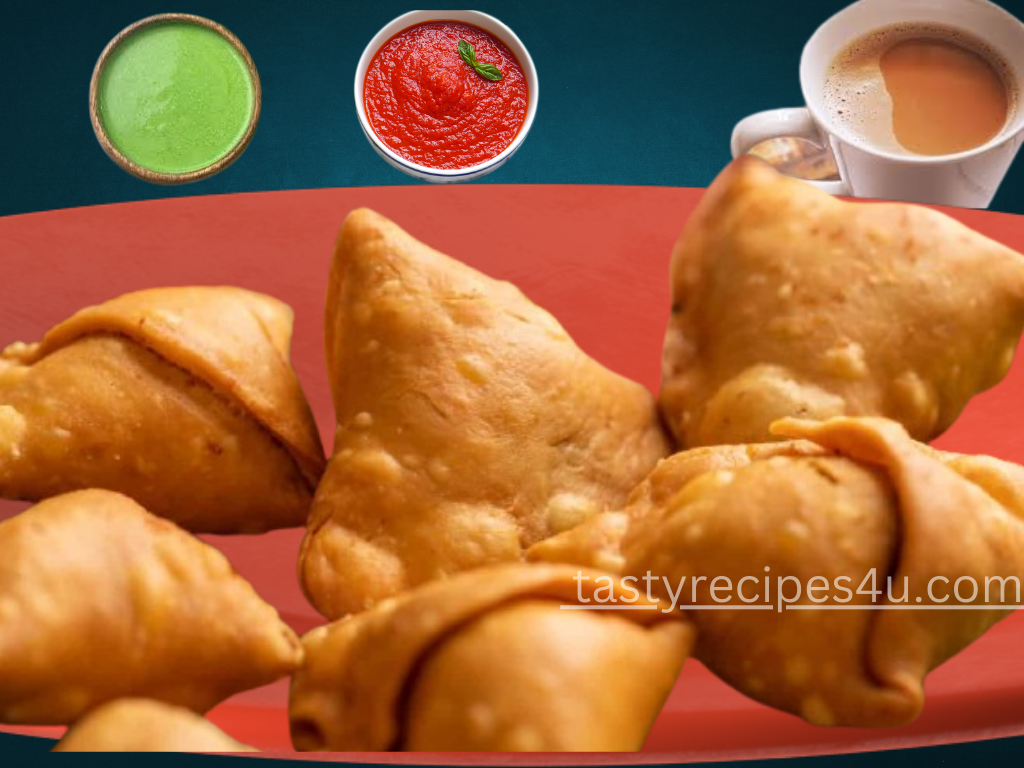
Tips and Tricks for Perfect Samosa Recipe
- Perfect Dough:
- The key to crispy samosa recipe lies in the dough. Ensure it is kneaded well and rested properly to achieve the right texture.
- Filling Variation:
- While the classic potato and pea filling is traditional, feel free to experiment with other ingredients like minced meat, paneer (Indian cottage cheese), or mixed vegetables for variety.
- Sealing Technique:
- Properly sealing the samosas is crucial to prevent the filling from leaking during frying. Use water to seal the edges securely and press firmly to ensure a tight seal.
- Frying Temperature:
- Maintain a consistent oil temperature while frying to ensure even cooking and crispiness. The oil should be hot enough to bubble around the edges of the samosas when dropped in but not smoking.
- Storage:
- Although fresh and hot samosas are the best, you can keep leftovers in the fridge for a few days in an airtight container.
- To get a crispy texture, reheat them in the oven or air fryer.

Frequently Asked Questions (FAQs):
Q: How can I make my samosas extra crispy?
A: To achieve extra crispy samosas, make sure to fry them at the right temperature. The oil should be sufficiently heated without smoking. Also, ensure that the samosas are properly sealed to prevent oil from seeping into the filling.
Q: Can I make samosas ahead of time and freeze them?
A: Yes, you can prepare the samosas ahead of time and freeze them for later use. After assembling the samosas, place them on a baking sheet and freeze until firm. Once frozen, transfer them to a zip-top bag or airtight container and store in the freezer. When ready to fry, you can fry them directly from frozen, adding a few extra minutes to the frying time.
Q: Is it possible to bake samosas rather than fry them?
A: Yes, Baking samosas is a healthy substitute for frying them. The assembled samosas should be placed on a baking sheet covered with parchment paper and baked at 375°F (190°C). Brush them with oil or melted butter and bake for about 25-30 minutes or until golden brown and crispy.
Q: How do I prevent my samosas from becoming soggy?
A: To prevent samosas from becoming soggy, ensure that the filling is completely cooled before assembling them. Additionally, make sure the oil is hot enough before frying the samosas. Frying at the right temperature will help seal the exterior quickly, preventing oil from penetrating the dough and making it soggy.
Q: Can I make samosas without using potatoes?
A: Yes, you can make samosas without potatoes by using alternative fillings such as minced meat, paneer (Indian cottage cheese), or mixed vegetables like carrots, peas, and cauliflower. Depending on your taste, adjust the seasoning and spices.
Conclusion:
With this ultimate guide to making perfect samosas, you have all the tools and knowledge you need to recreate this classic Indian snack at home. From preparing the dough and filling to frying to crispy perfection, you’ll be able to impress your friends and family with your samosa-making skills. So roll up your sleeves, gather your ingredients, and get ready to enjoy the delicious flavors of homemade samosas!
